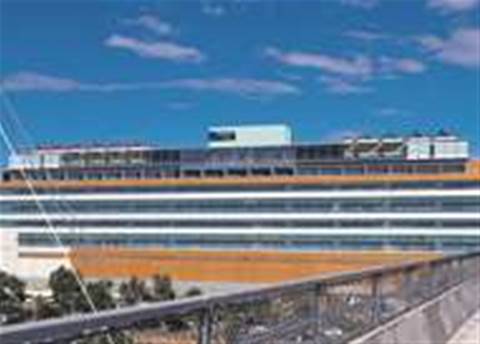Virtualisation project
Telstra CIO Ashley Lavaro said the telco is virtualising both its x86 and SPARC server systems and is consolidating in excess of 100 data storage arrays down to "a handful."
The company has decommissioned over 1000 physical x86 servers to date and is achieving a virtual server to physical server ratio in the order of 25:1.
Storage-wise, the consolidated data centres will run with a mix of solid state storage (for fast access) and low-cost SATA (serial ATA) disk. The telco has also invested in thin provisioning and de-duplication smarts to reduce its total data storage load.
A dozen distributed network data centres
As reported earlier on iTnews today, the telco also announced plans to spend $14 million building out twelve "network media centres" -- small data centres housed within telephone exchanges -- across Australia's major cities over the next three to five years.
These network media centres will be located at existing Ethernet aggregation points that Telstra has built for its Next IP network. There are a further 147 such aggregation points, should the telco see stronger than expected demand for its media content distribution.
The first of these network media centres has been kitted out in the Sydney CBD enclave of Haymarket [see photo gallery attached], with another under construction in Lonsdale, Melbourne.
The Haymarket prototype features up to 24 server and storage racks and two racks of network kit, capable of running at between 15kW to 30kW per rack, housed within a 35 square metre room kitted out with hot aisle containment and overhead cooling. The modular, pod-based design means that network equipment and servers/storage can be wheeled in and out with relative ease.
Telstra will house firewalls, database servers, app servers, web servers and storage within these racks.
Michael Lawrey, executive director of network and technology at Telstra Operations said the network media centres will provide considerable cost savings in terms of power consumption. The 330 kW of equipment load in each room would usually require an additional 270 kW of power to cool in traditional facilities, but in the pod-based housing will only require 59 kW.
Lawrey also revealed Telstra plans to save "a million litres of fresh water a year" in each centre through advanced chilled water cooling techniques.
These small distributed data centres can be used for content services alongside the CDN, but also to regionalise cloud compute services being offered from Telstra's two largest data centres.
"We could, for example, distribute our cloud services from these network media centres should a State Government have a requirement to have their data served from within their borders," Lawrey said.




.png&h=142&w=230&c=1&s=1)



.jpg&h=142&w=230&c=1&s=1)




.jpg&w=100&c=1&s=0)







.jpg&q=95&h=298&w=480&c=1&s=1)



